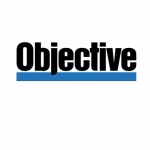What is most valuable?
All features are important for a complete solution since any solution will need to cater to drive the transformation from the reliance on paper-based processes to digitized solutions, as per the following:
- Inbound processing – capturing incoming traffic through inbound scanning, conversion to long-term preservation PDF format, document classification, metadata extraction, capturing emails.
- Repository/storage of content – ingesting all inbound traffic to a reliable ECM system with governance capabilities relating to records and information management with the capacity to identify records, storing, retrieving, collaborating, tracking, security, lifecycle management – disposal and retention, etc.
- Outbound processing – documenting composition and dispatch and database storage.
How has it helped my organization?
Many organizations are facing the same problems with their operating environment and scope of responsibilities. Due to the fact that collaboration with external stakeholders has grown in scale and complexity, keeping track of important business decisions and ensuring that all relevant internal and external stakeholders have timely access to this information, is now a major corporate challenge, as in the exponential growth of paper, shared drives and emails.
Government agencies and private organisations alike expect to do more with the same or fewer resources. Giving staff the tools to enhance productivity is essential to help meet the increasing demands and expectations of the Government and public in a constrained fiscal environment. Changes to Government policy concerning digital records management, security and amendments to legislation such as the Freedom of Information and Privacy Acts are also expanding compliance requirements for employees and corporate IT systems. Digital Continuity is an approach to creating and managing information that can be trusted and used for as long as needed despite technological change.
This is how the solution has helped transform business organisations. Businesses are facing the same problems. Network drives, accumulation of paper records, and email used to manage documents and other digital format records of business value do not adequately support the information management compliance requirements. This lack of an enterprise approach to information access and management is limiting organisational efficiency, responsiveness and capacity to maximize business opportunities.
Investment in a modern EDRMS solution has been identified as a key component for addressing efficiency and compliance business needs. Electronic business will mean the necessity to become more diligent and smarter in terms of the information management of the department. Usually a staged approach is taken to select and implement a commercial-off-the-shelf EDRMS. Hence the above vendors cater for these goals and objectives to some degree with integration to Record Management software capabilities, as well as OCR, conversion capabilities and content management.
In line with any digital continuity policy an EDRMS solution is about making sure that information is complete, available and therefore usable for business needs. Information is usable if people can:
- Find it when they need it.
- Open it as they need it.
- Work with it in the way they need it.
- Understand what it is and what it is about.
- Trust that it is what it says it is.
So any product vendor solution must be able to meet the above minimum requirements closely aligned to an out of the box solution such as MS SharePoint has perfected.
What needs improvement?
Perhaps:
- Cloud computing could be added.
- The ability to substantiate adherence to Australian security standards.
- Better ways in managing extraction of metadata.
In the case of SharePoint you rely on user selection but vendors should try to alleviate human intervention where possible.
For how long have I used the solution?
I have used the above products for the last 20 years.
Buyer's Guide
OpenText Content Manager
April 2025
Learn what your peers think about OpenText Content Manager. Get advice and tips from experienced pros sharing their opinions. Updated: April 2025.
849,190 professionals have used our research since 2012.
What was my experience with deployment of the solution?
Many projects I've worked on encounter issues in production relating to load balancing and throttling where systems cannot cope with the volumes and capacity of transactional processing.
What do I think about the stability of the solution?
In the case of conversion of Adlib software polling MS Exchange and writing to an HNAS drive, it managed to bring down both servers. It's paramount to adequately plan capacity and preventive maintenance.
What do I think about the scalability of the solution?
They need to support the processing by adding CAS servers, etc to manage extra loads. Also there is the importance of creating an active/active redundancy topology.
How are customer service and support?
The technical support is OK as long as you pay for ongoing technical support structure to get appropriate support during critical breakdown when time is money and have the vendor understand your backup and recovery needs for transparent BAU continuity.
Which solution did I use previously and why did I switch?
We have used many that do not deliver what they say so we chose the above because they deliver the goods. However, licensing is always an issue.
How was the initial setup?
Initial setup is always complex to get all integrated processes/technology/software working together. For example, Adlib software will poll exchange mailboxes to ingest and process emails and create conversion and content metadata XML output as well as PDFA documents including native formats. OpenText OCC will poll the HNAS drive to ingest the output files that Adlib produced and to OCR all documents and create full text index to extract all metadata and them apply customization code that ingests the Adlib conversion metadata and merge the OCR content metadata then output the transformed XML with the PDF files ready for the next step.
Any content management software will then poll the output directory and ingest all files into the ECM system to store in a database record management system. Paper documents digitized by an external provider were transferred via secure FTP to a shared drive which the ECM system utilities would also poll to ingest and create the records in the EDRMS.
What about the implementation team?
Some implementations were in-house and others were through vendor engagement.
What was our ROI?
Initial ROI is not appreciated but if you look at the time it takes to process for example, claims, then you are providing an optimized business model where you are competitive because you are more responsive to customer requests and processing.
Claims don't take a week or a month, instead they are processed daily and get into a downstream workflow system that sends notifications and gets assigned to the relevant teams to action. This creates a more sustainable, competitive, government compliant, and secure solution in the long term which pays off on the investment.
What other advice do I have?
Be very clear with functional and non-functional requirements. Set forth minimum mandatory baseline business requirements in order to meet overall EDRMS objectives, aligned with the Principles and Functional Requirements for Records in Digital Office Environments and compliance. Also identify non-mandatory features deemed desirable but not mandatory.
In addition:
- Provide the organisation functional requirements specific to the use and operation of the EDRMS.
- Detail the relevant standards and specifications applicable to the efficient management of public/private records – NAA or PROV.
- Provide the mapping and traceability between the Business Requirement and NAA standard/business and specification with the functional use case as context.
- Provide guidance to vendors in the implementation of the EDRMS system, testing and user acceptance testing.
All requirements should be uniquely identified for tracking purposes and have a business priority assigned to provide an understanding of business importance.
The priorities should be derived from an EDRMS strategy to ensure consistency across business units. A code should be provided to indicate EDRMS’s (Vendors) ability to meet the business, compliance and functional requirements. There should be clear traceability in their ability to meet expectations. What is their ability to meet functional and non-functional requirement statements? Can they fully meet, partially meet, conditionally meet, solution not concluded, cannot deliver, etc.
Stipulate your complexity model to identify what requires complex customization, requires complex configuration, requires minor configuration or is an out of the box requirement. Identifying these components will make it easy to manage the vendor's deliverables and gives the business a better grasp on the monetary bottom line expectation and where the money is being allocated to. Create transparency where you can.
Disclosure: I am a real user, and this review is based on my own experience and opinions.











Sharing documents in HPE CM/RM is available with RM Workspace www.rmworkspace.com.au. Used by over 15 agencies in Australian Federal Government.